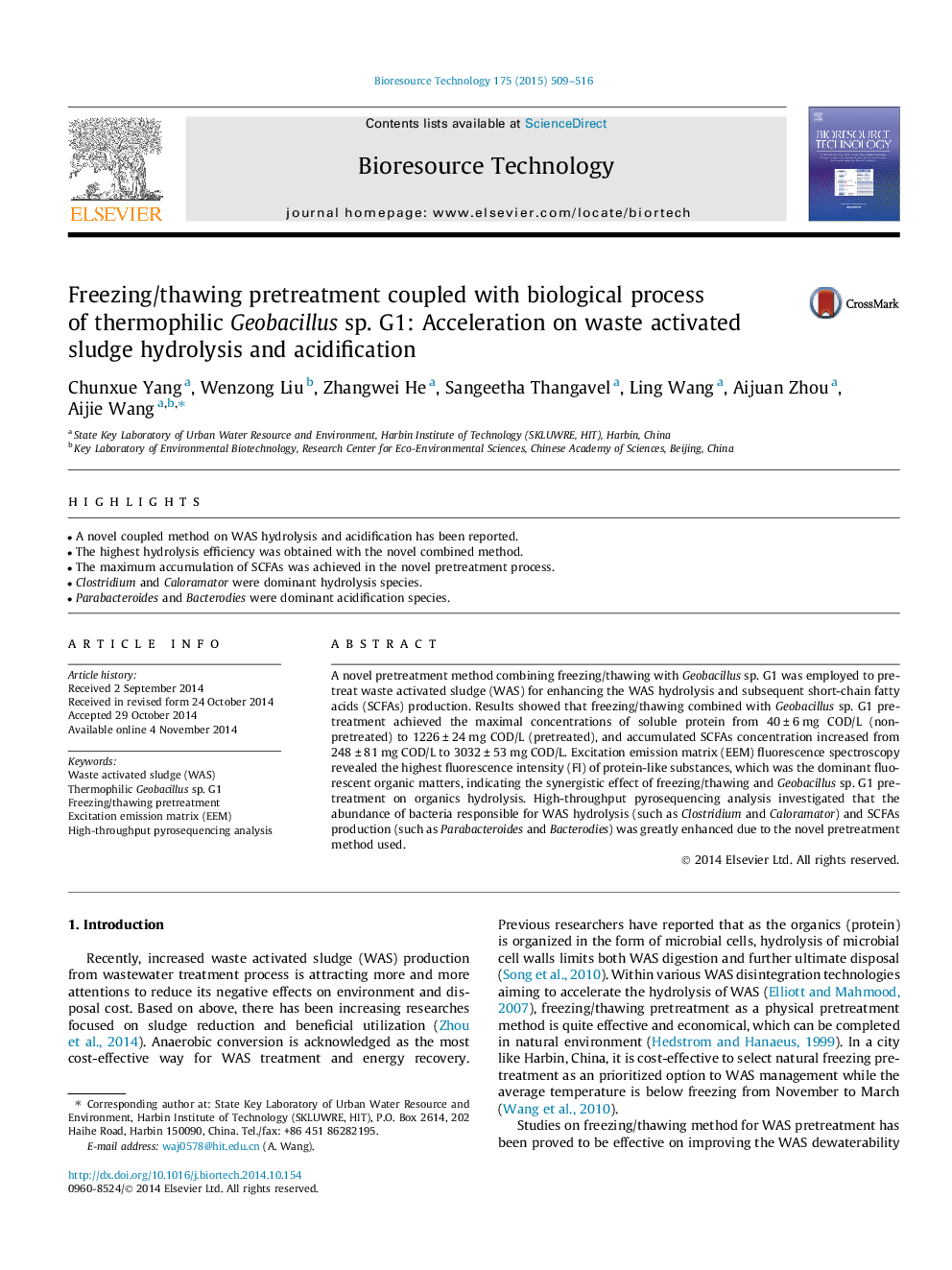| کد مقاله | کد نشریه | سال انتشار | مقاله انگلیسی | نسخه تمام متن |
|---|---|---|---|---|
| 680306 | 1459968 | 2015 | 8 صفحه PDF | دانلود رایگان |

• A novel coupled method on WAS hydrolysis and acidification has been reported.
• The highest hydrolysis efficiency was obtained with the novel combined method.
• The maximum accumulation of SCFAs was achieved in the novel pretreatment process.
• Clostridium and Caloramator were dominant hydrolysis species.
• Parabacteroides and Bacterodies were dominant acidification species.
A novel pretreatment method combining freezing/thawing with Geobacillus sp. G1 was employed to pretreat waste activated sludge (WAS) for enhancing the WAS hydrolysis and subsequent short-chain fatty acids (SCFAs) production. Results showed that freezing/thawing combined with Geobacillus sp. G1 pretreatment achieved the maximal concentrations of soluble protein from 40 ± 6 mg COD/L (non-pretreated) to 1226 ± 24 mg COD/L (pretreated), and accumulated SCFAs concentration increased from 248 ± 81 mg COD/L to 3032 ± 53 mg COD/L. Excitation emission matrix (EEM) fluorescence spectroscopy revealed the highest fluorescence intensity (FI) of protein-like substances, which was the dominant fluorescent organic matters, indicating the synergistic effect of freezing/thawing and Geobacillus sp. G1 pretreatment on organics hydrolysis. High-throughput pyrosequencing analysis investigated that the abundance of bacteria responsible for WAS hydrolysis (such as Clostridium and Caloramator) and SCFAs production (such as Parabacteroides and Bacterodies) was greatly enhanced due to the novel pretreatment method used.
Journal: Bioresource Technology - Volume 175, January 2015, Pages 509–516